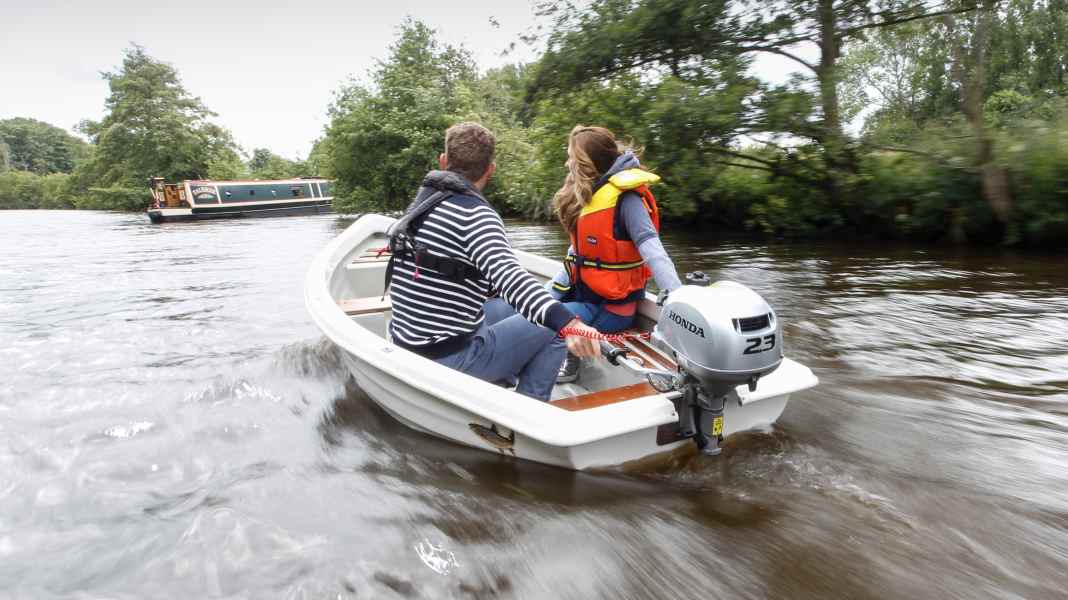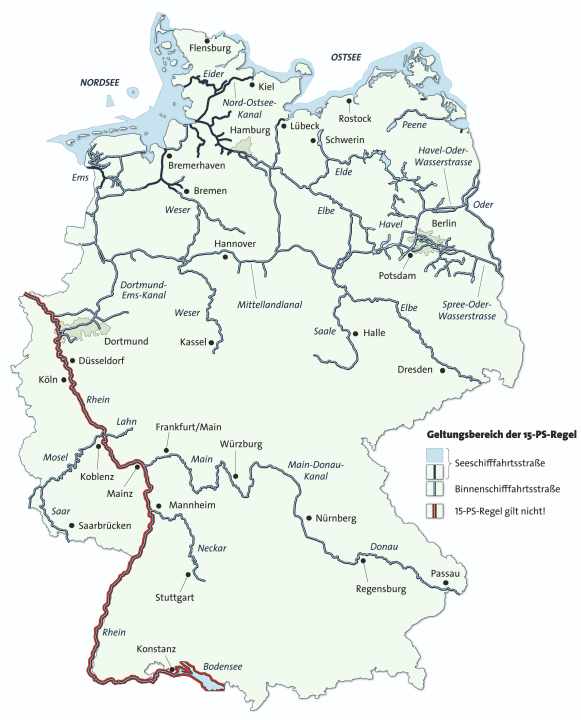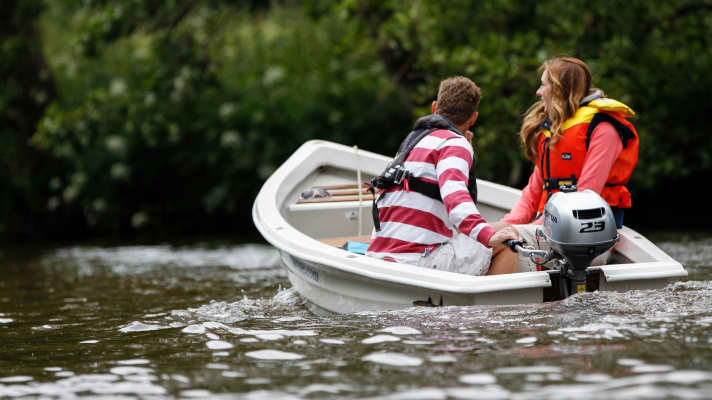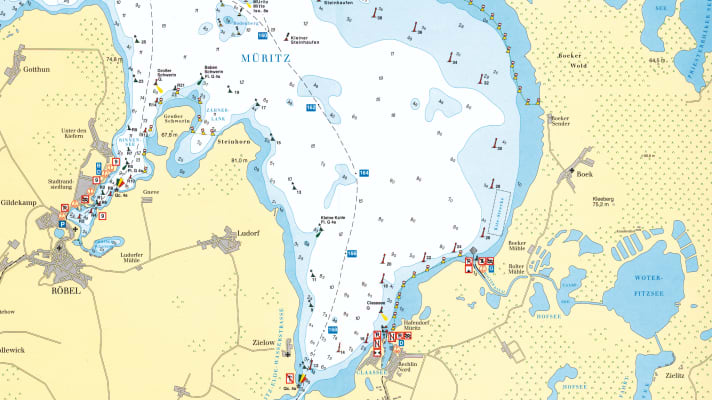
Sea and inland areas
A basic distinction is made between sea and inland areas. The sea area covers the entire German coastline and some of the rivers and their tributaries. The following applies in these areas the licence-free 15 hp regulation unrestricted.

However, the new regulation does not apply on the Rhine and Lake Constance. How does it look abroad off? In countries where driving licences are not compulsory, Germans are usually allowed to drive without a licence. In countries where a driving licence is required National regulationssome of which are stricter than our regulations. More information is available from the ADAC or BOOTE reader service.
Compulsory equipment
If you want to sail at sea (inland also recommended), you need Mandatory accessories. These include a paper chart, sound signalling device (horn), anchor ball (must be set when anchored) and the navigation lights, which are not there to make it easier to see into the distance, but to be seen on the water at night and in uncertain weather.
The attached Position lanterns must have a type examination, for example from the BSH (Federal Maritime and Hydrographic Agency). Exception for lighting: if the prescribed lanterns cannot be used, for example because the engine does not have a light coil, which is often the case with outboards with manual starters and tiller steering.

Dismountable inflatable boats also have the disadvantage that there is no way to install the lanterns properly. If you own such a boat, you are not allowed to sail at night or in unsafe weather unless there is an emergency. In this situation a white light (e.g. torch) and show it in good time to prevent a collision.
With the Horn an electric or mouth horn is sufficient. You can find out which signals have which meaning on sound signal boards, which are available as practical stickers in boat accessory shops as well as nautical charts. Simple adhesive letters are also available there to mark the boat, as boats in inland areas are subject to the so-called Labelling regulation.

Boats with a propulsion engine of 2.21 kW (3 hp) or more must have a licence plate on inland waterways. These can be obtained at water and shipping authoritiesADAC and the German Motor Yacht Association. At sea, the licence plates are also valid or the simple lettering with the boat name and home port. A Liability insurance is not mandatory in Germany, but we strongly recommend it.
Traffic rules
In principle, the following applies, that commuter traffic has priority and that pleasure craft must keep out of the way. In addition, you must keep a sufficient distance from work boats and ships or overtake them. Basically, you should behave on the waterways in the same way as on the road: keep to the right, keep right before left and do not endanger anyone. The skipper can recognise where the waterways have their limits by the Fairway buoys.

On maritime waterways, the green buoy is on the starboard side (right) and the red buoy on the port side (left). On inland waterways, you look from the source to the mouth: The red buoys on the right bank and the green buoys on the left bank delimit the fairway. If you see yellow buoys, you should give them a wide berth, as they are either a protected section (e.g. bathing bays) or a shoal.
White signs with a red border and a number in the centre indicate the maximum permitted speed. But beware: there are not signs everywhere, so the driver must consult the area guide beforehand. Some signs are self-explanatory, for others there are illustrated signs in the accessories shop.
